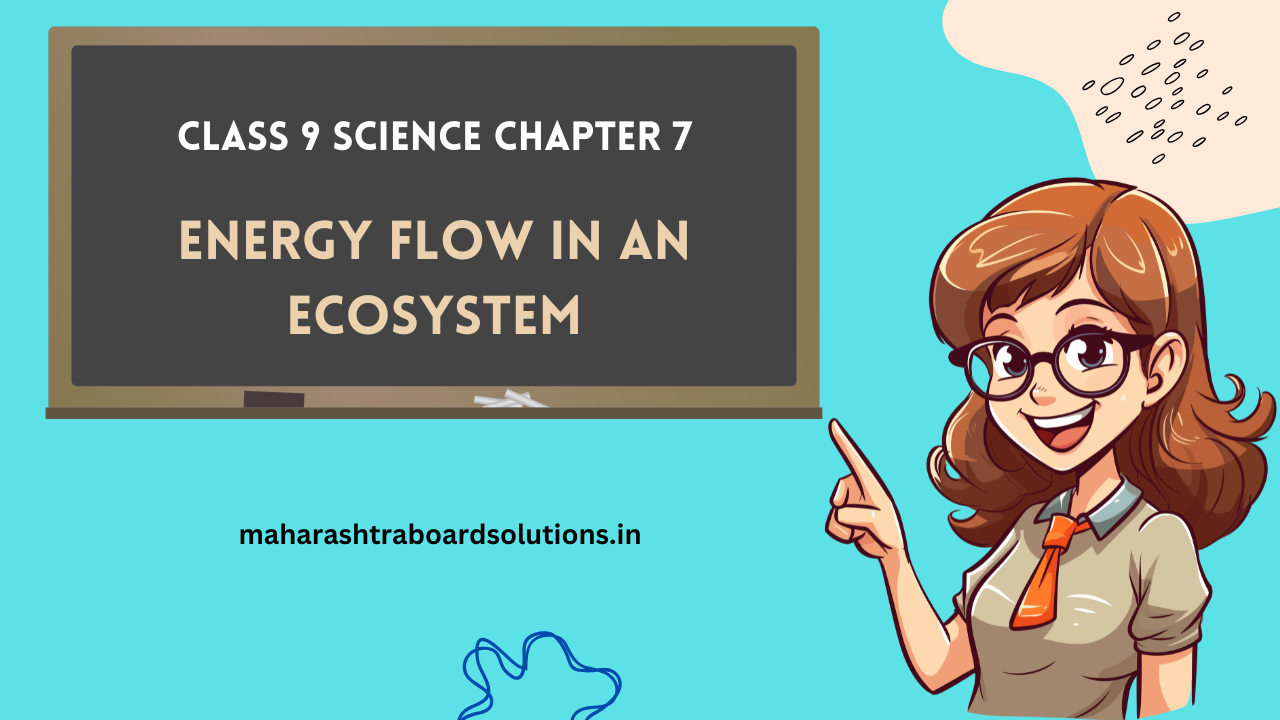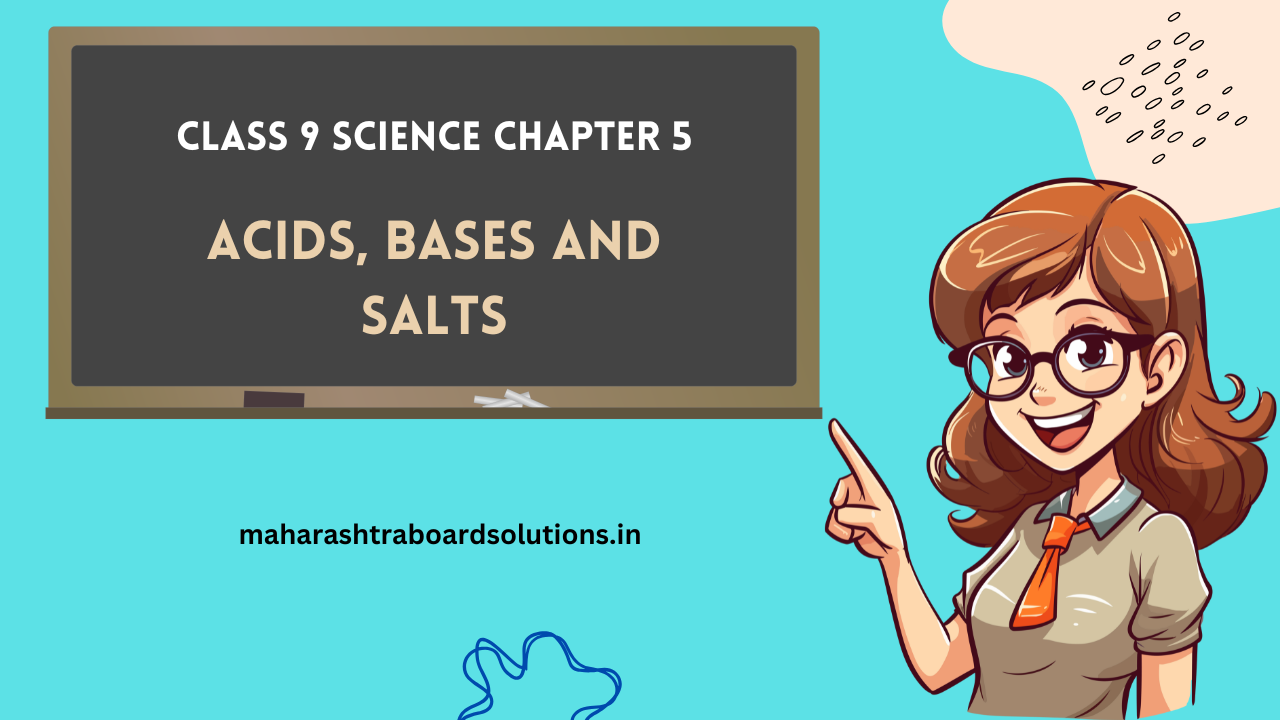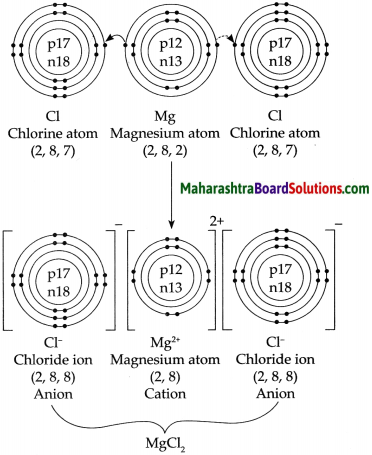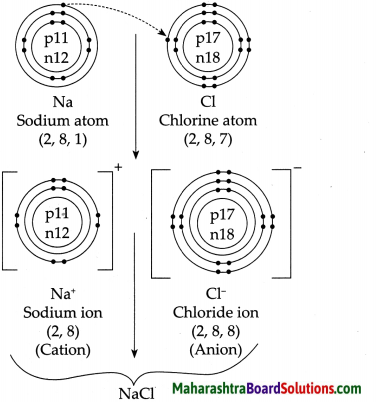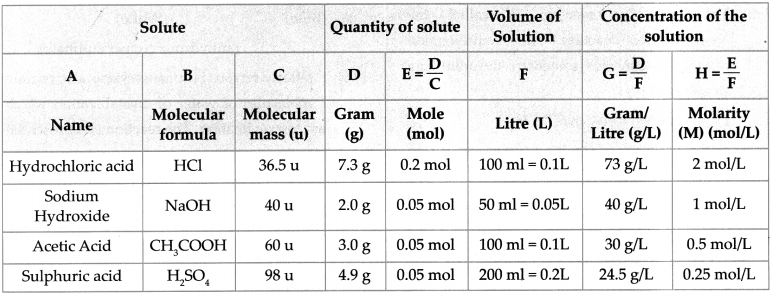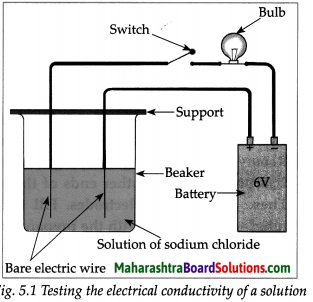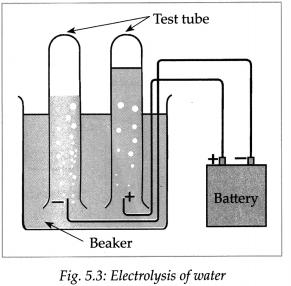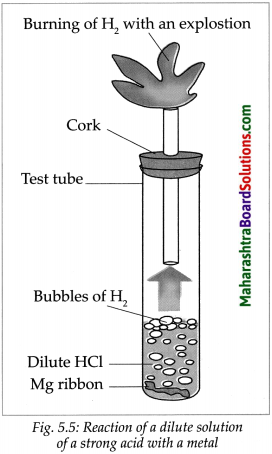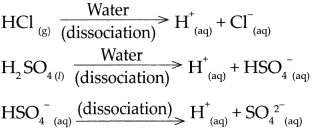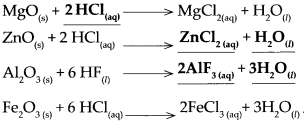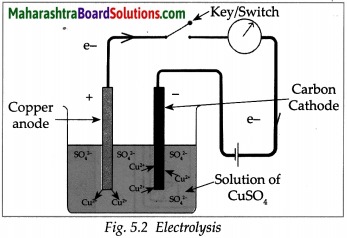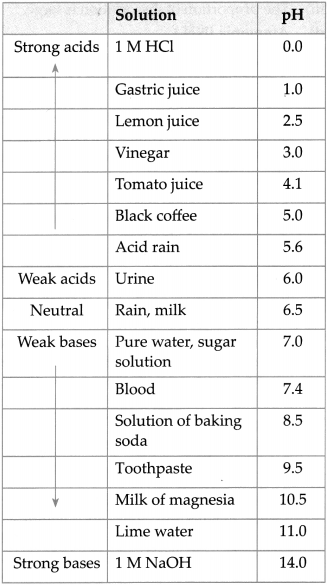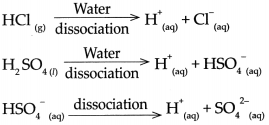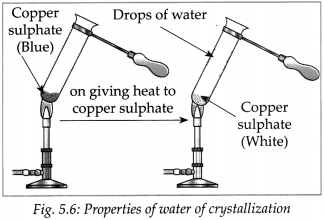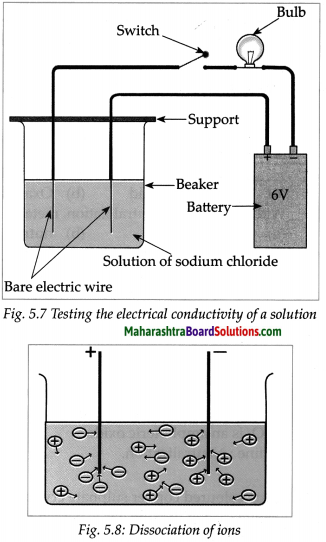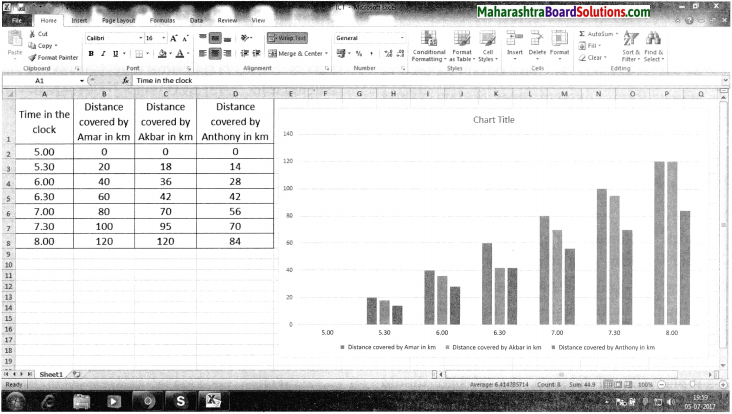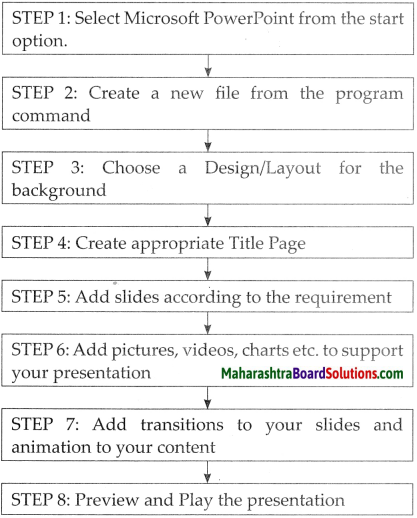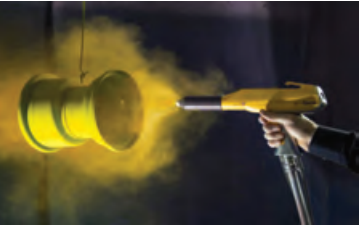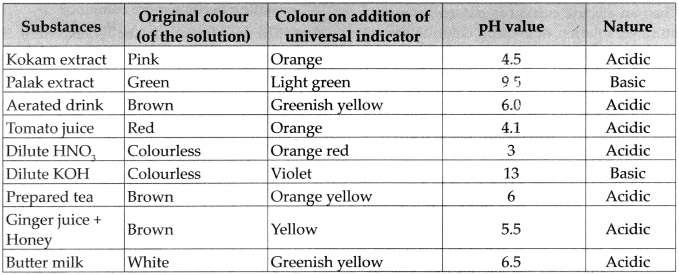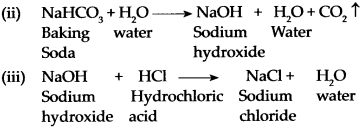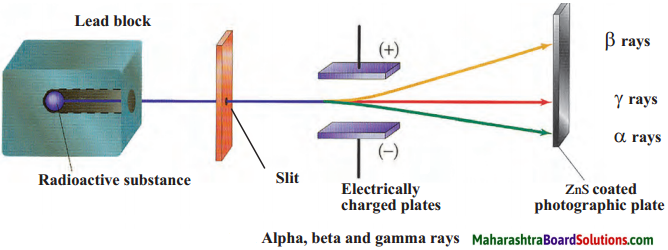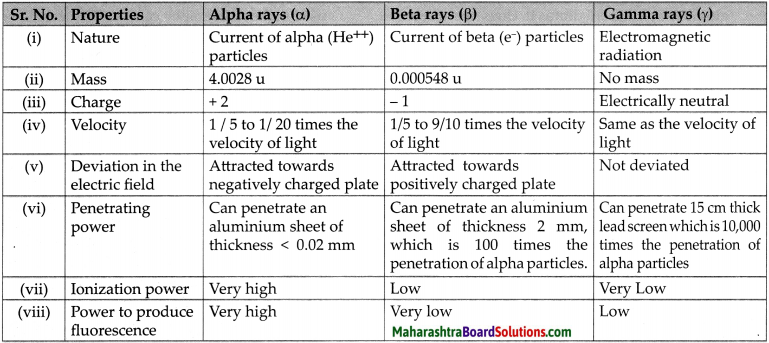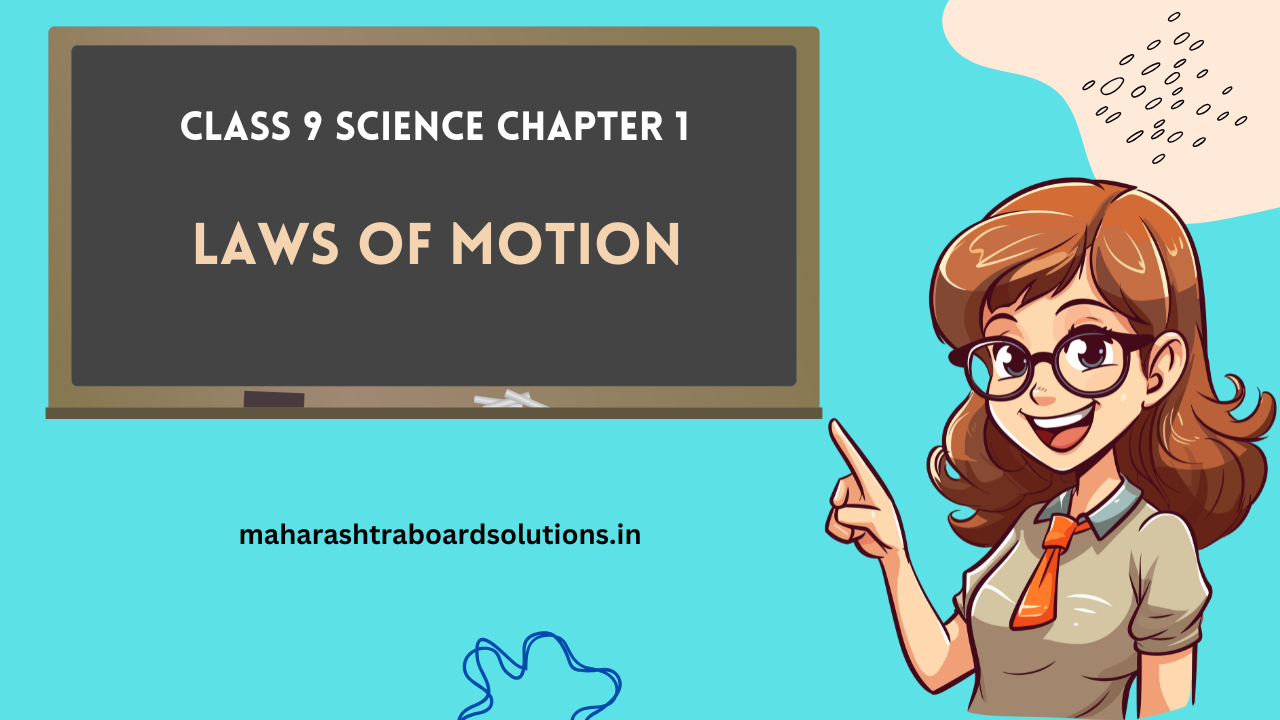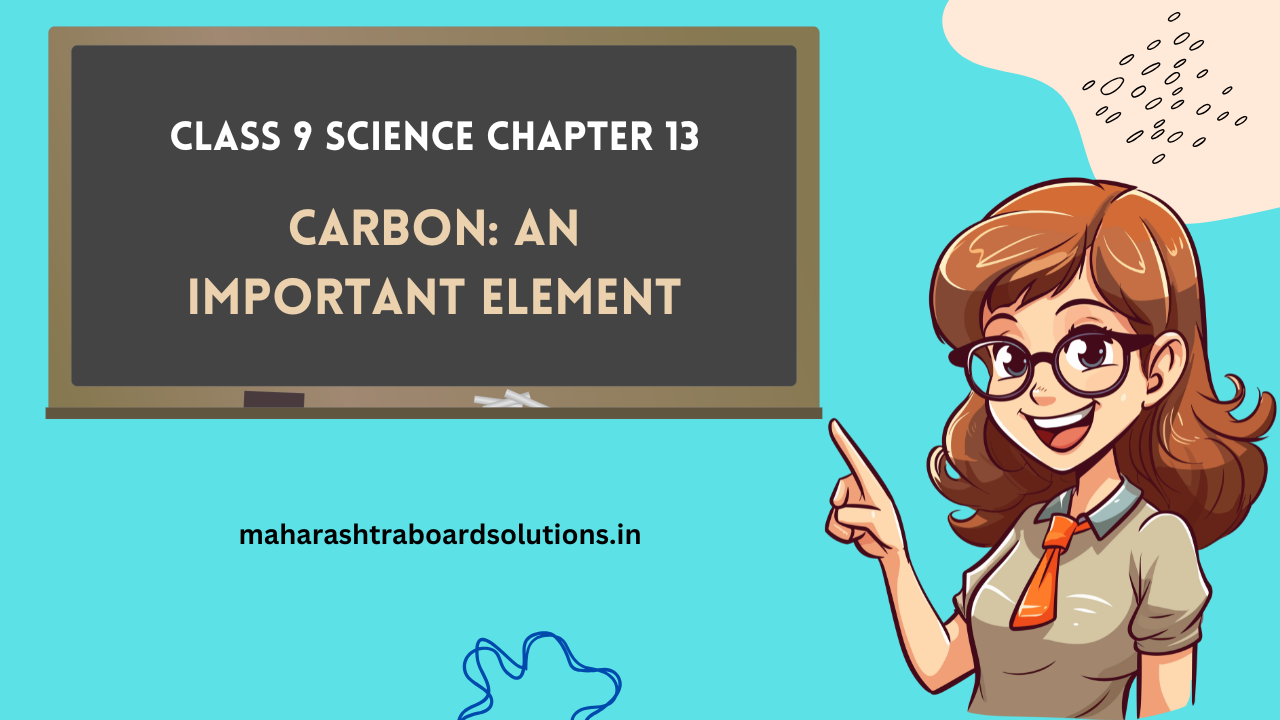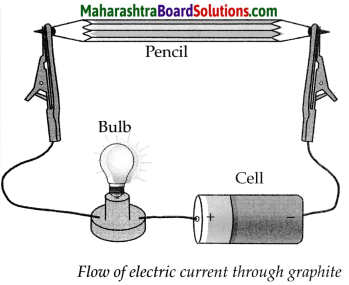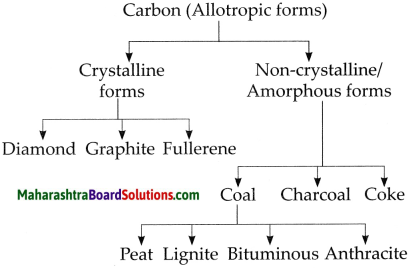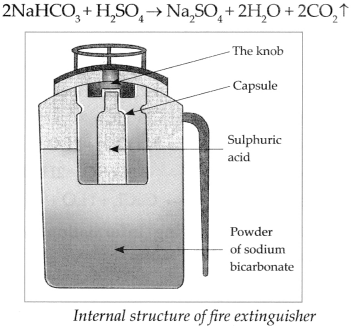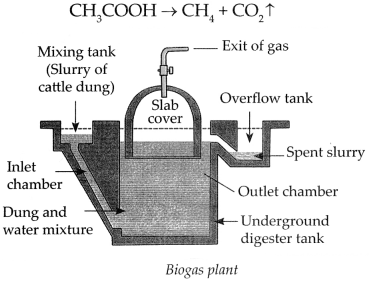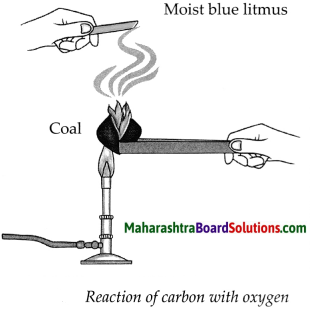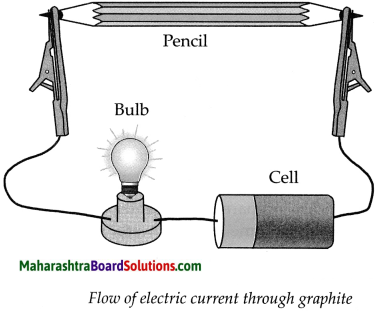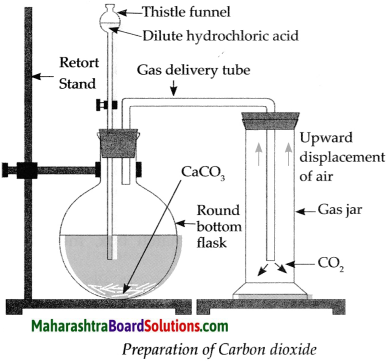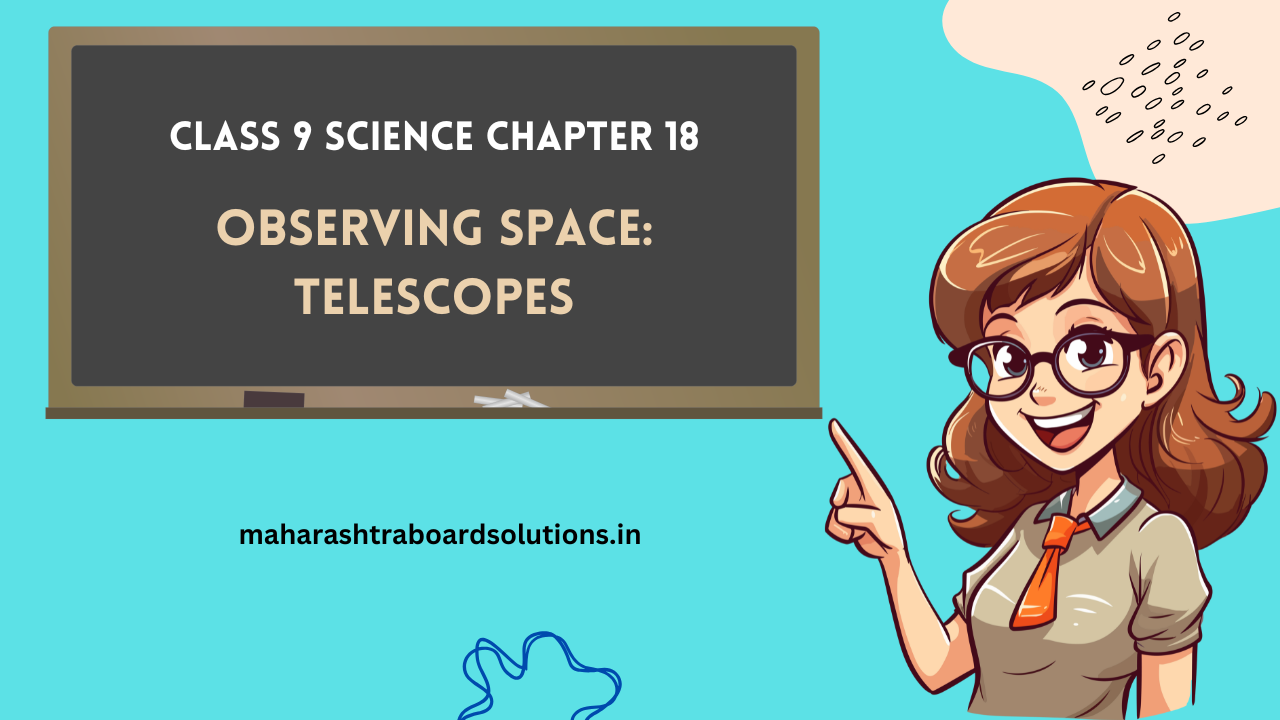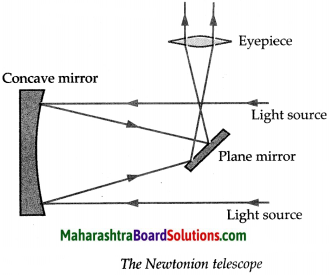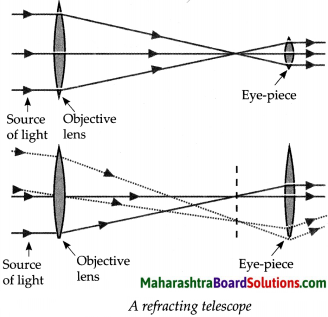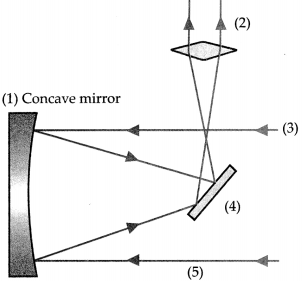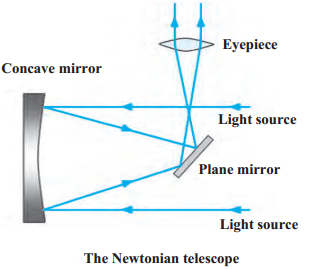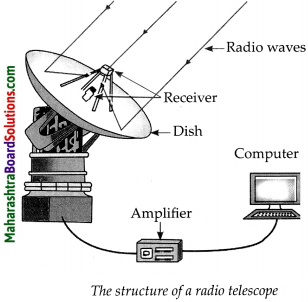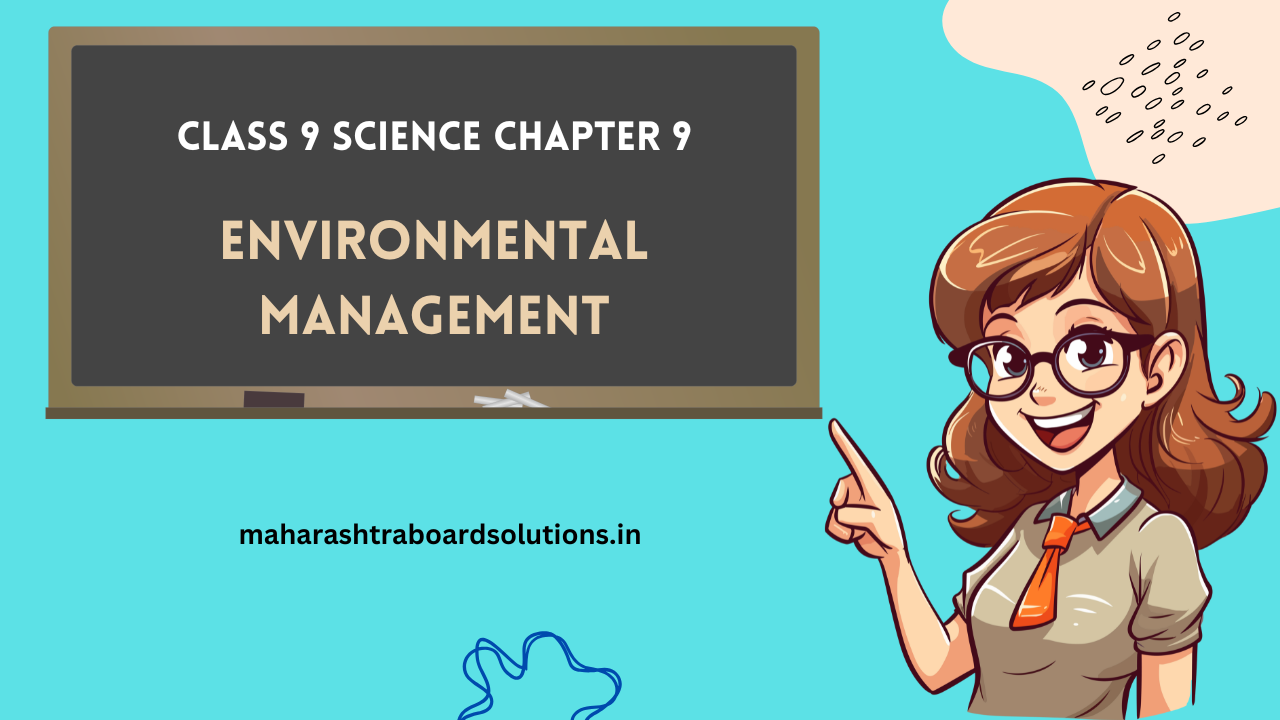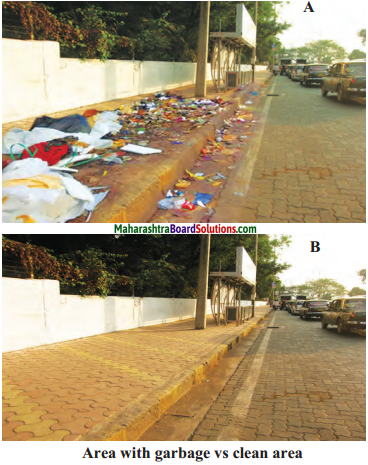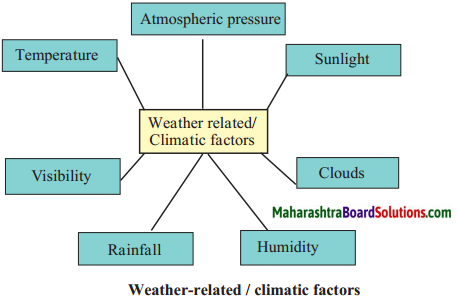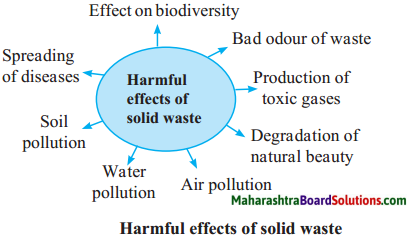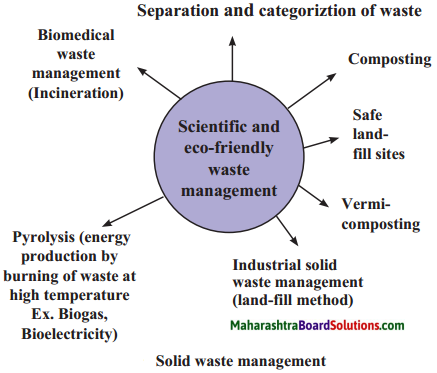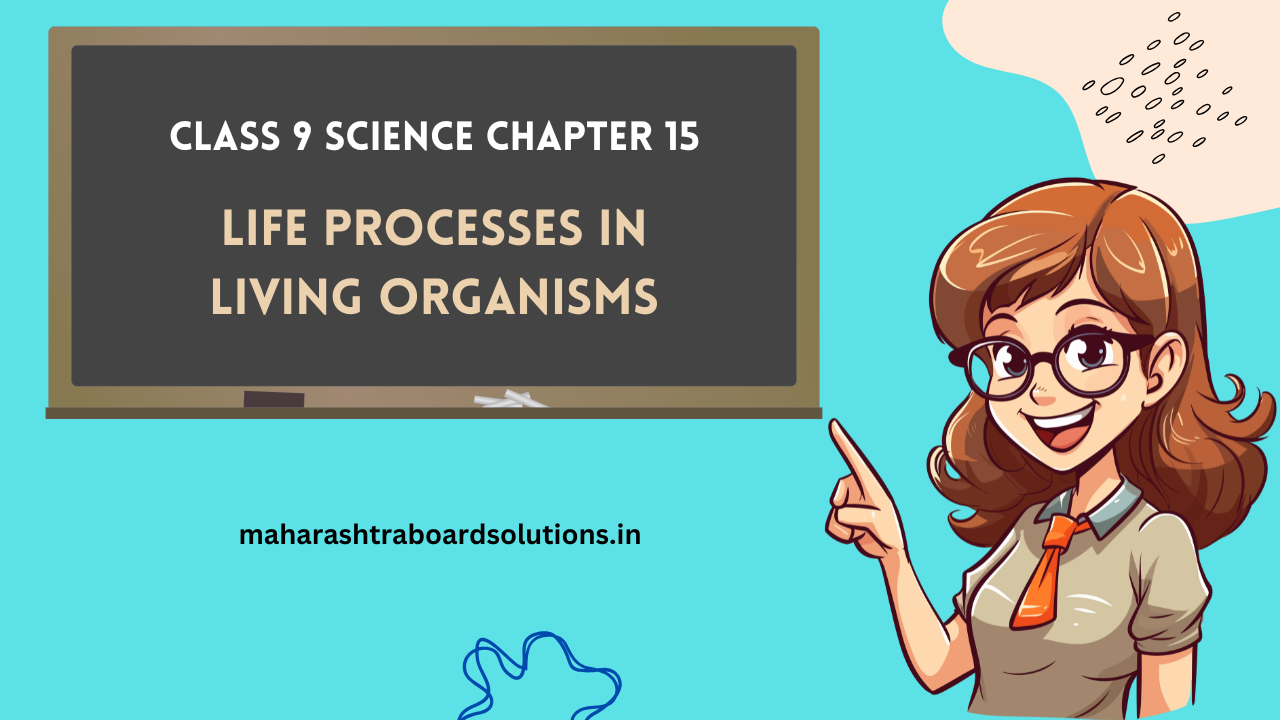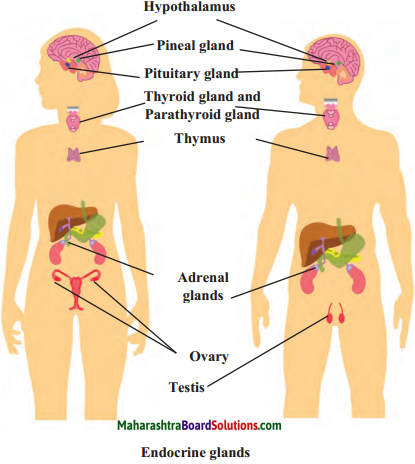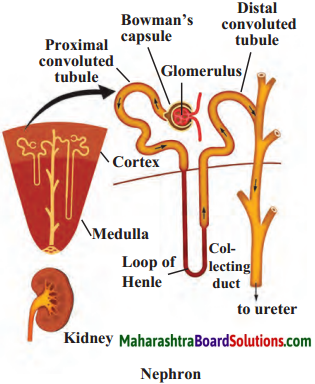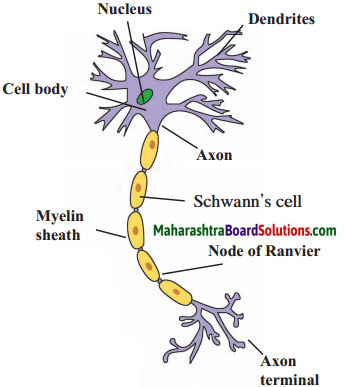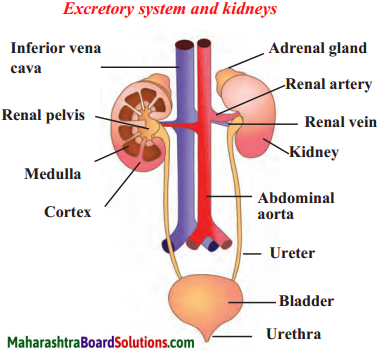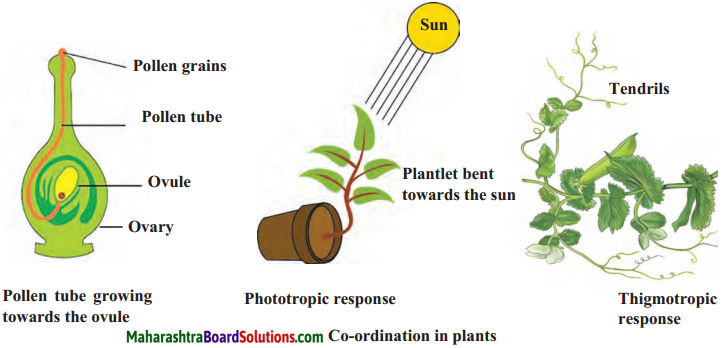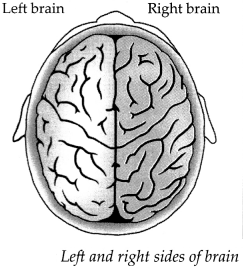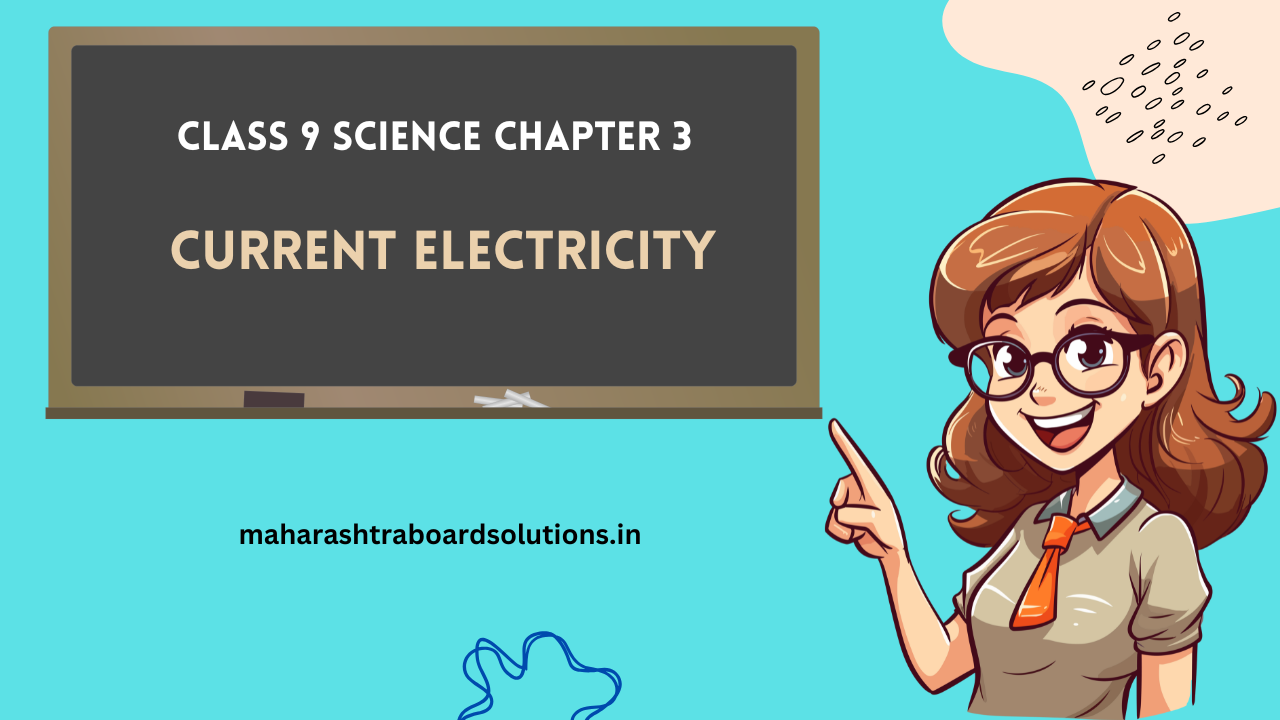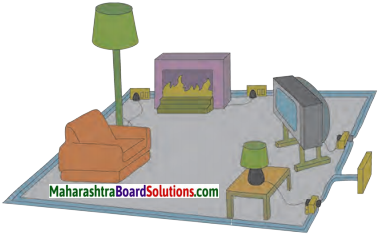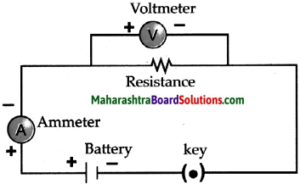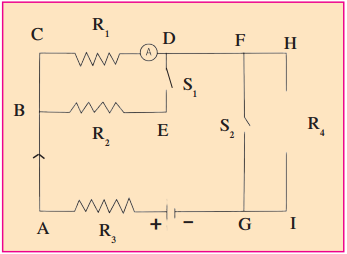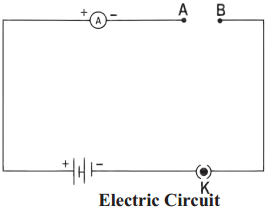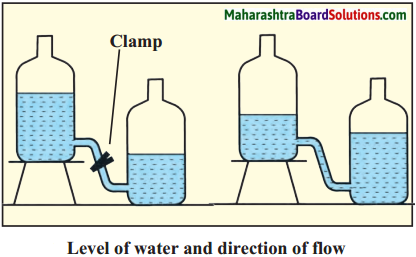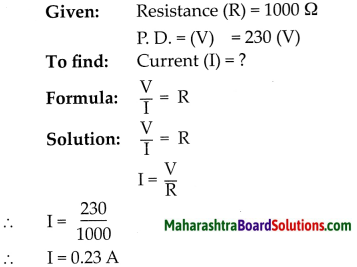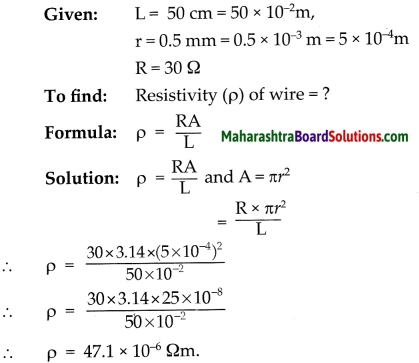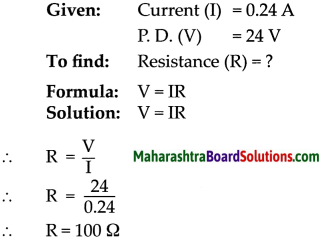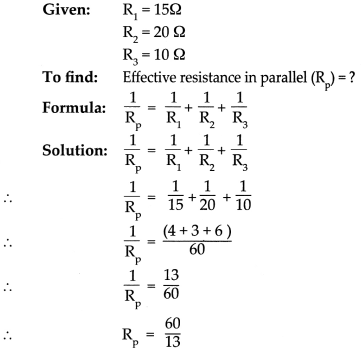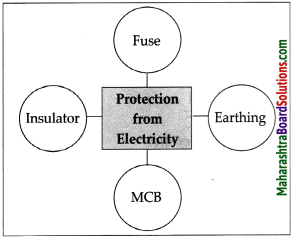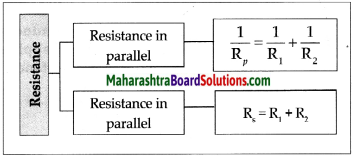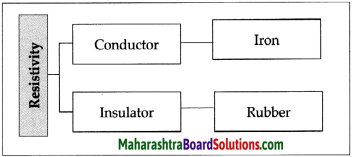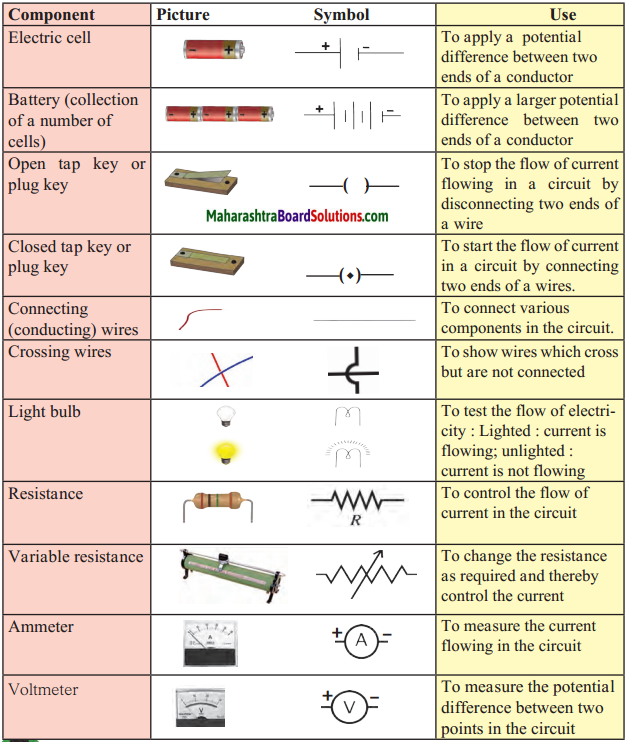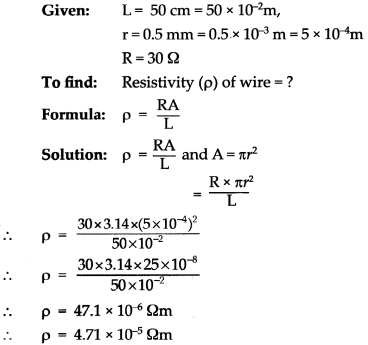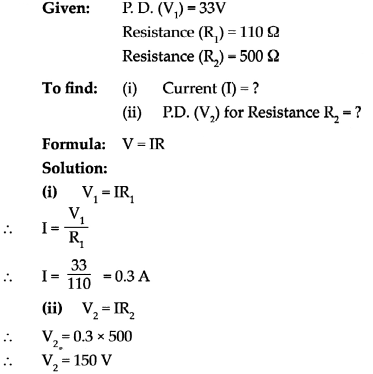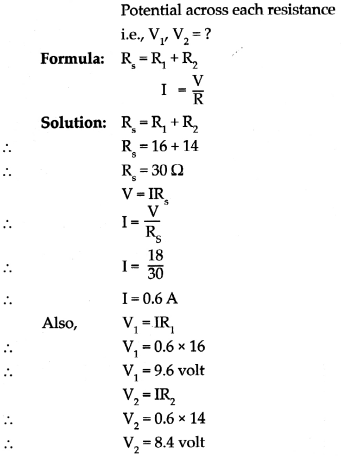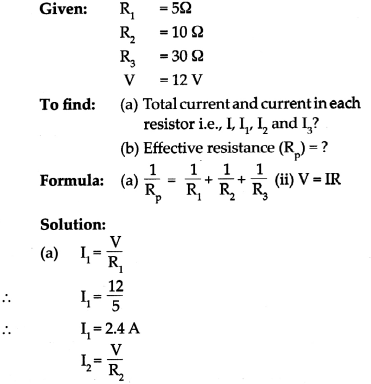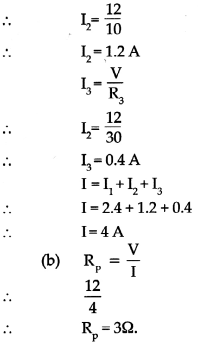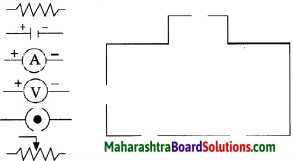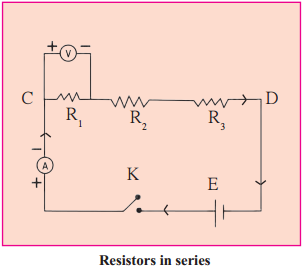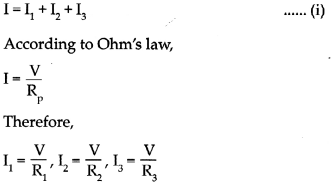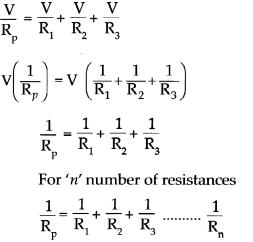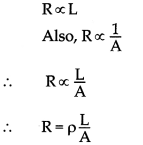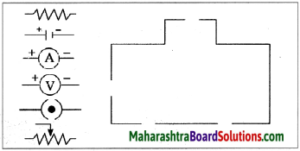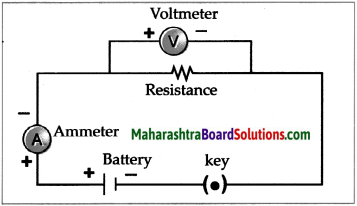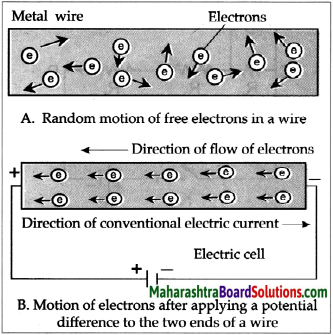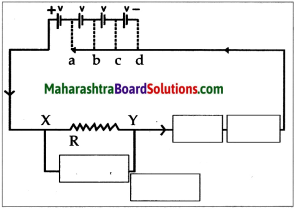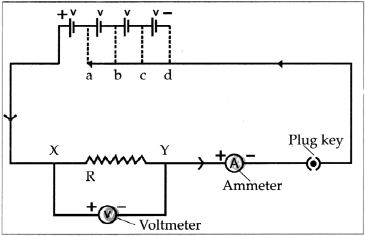Balbharti Maharashtra State Board Class 9 Science Solutions Chapter 7 Energy Flow in an Ecosystem Notes, Textbook Exercise Important Questions and Answers.
Std 9 Science Chapter 7 Energy Flow in an Ecosystem Question Answer Maharashtra Board
Class 9 Science Chapter 7 Energy Flow in an Ecosystem Question Answer Maharashtra Board
1. Complete the following table (Carefully study the carbon, oxygen and nitrogen cycles).
| Bio-geo-chemical cycles | Biotic processes | Abiotic processes |
| 1. Carbon cycle | ||
| 2. Oxygen cycle | ||
| 3. Nitrogen cycle |
2. Correct and rewrite the following statements and justify your corrections.
a. Carnivores occupy the second trophic level in the food chain.
b. The flow of nutrients in an ecosystem is considered to be a ‘one-way’ transport.
c. Plants in an ecosystem are called primary consumers.
![]()
3. Give reasons.
a. Energy flow through an ecosystem is ‘one way’.
Answer:
- The Sun is the most important source of energy in any ecosystem.
- Green plants of the ecosystem store some amount of solar energy in the form of food.
- Before reaching the decomposers, this energy is passed on from one trophic level to the next.
- Decomposers dissipate some amount of energy in the form of heat.
- However, no part of the energy ever returns to the Sun. Hence, energy flow through an ecosystem is ‘one way’.
b. Equilibrium is necessary in the various bio-geo-chemical cycles.
Answer:
- The cyclic flow of nutrients within an ecosystem is called bio-geo-chemical cycles.
- Nutrients, necessary for the growth of organisms are continuously transferred from abiotic to biotic factors and biotic to abiotic factors within an ecosystem.
- Any imbalance in the cycles will break the link between the biotic and abiotic factors.
- Therefore, equilibrium is necessary between bio-geo-chemical cycles.
c. Flow of nutrients through an ecosystem is cyclic.
Answer:
- All organisms need nutrients for their growth.
- The nutrients carbon, oxygen, nitrogen, iron, calcium etc. are circulated and recycled from the biosphere to living organisms and after their death back to the biosphere.
- Nutrients are taken up by plants and then passed on to the consumers.
- Eventually, after their death, all types of consumers, are decomposed by decomposers like bacteria and fungi and the nutrients are again released into the biosphere and are, used again by living organisms.
Therefore, the flow of nutrients through an ecosystem is cyclic.
![]()
4. Explain the following cycles in your own words with suitable diagrams.
a. Carbon cycle.

Answer:
- The circulation and recycling of carbon from the atmosphere to living organisms and after their death back to the atmosphere is called the carbon cycle.
- Abiotic carbon atoms are circulated and recycled into biotic form mainly through photosynthesis and respiration.
- Hence, the carbon cycle is one of the important bio-geochemical cycles.
- Plants convert carbon dioxide into carbohydrates by the process of photosynthesis.
- Similarly, they produce carbon compounds like proteins and fats, too.
- Carnivores feed upon herbivores. In this way, biotic carbon is transported from plants to herbivores, from herbivores to carnivores and from carnivores to apex consumers.
- Main processes in the carbon cycle

- Eventually, after death, all types of consumers, are decomposed by decomposers like bacteria and fungi and carbon dioxide is released again into the atmosphere and is used again by living organisms.
- In this way, carbon is continuously passed on from one living organism to another. After the death of living organisms, carbon goes to the atmosphere and is again taken up by living organisms.
b. Nitrogen cycle.
Answer:
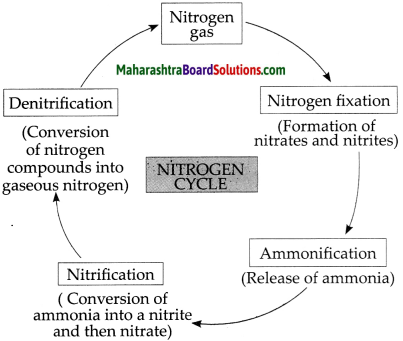
- Nitrogen forms 78% i.e. the maximum portion of the atmosphere. It is necessary for the maintenance of the cycle of nature.
- The circulation and recycling of nitrogen gas into the form of different compounds through various biotic and abiotic processes in nature is called the nitrogen cycle.

- All organisms participate in the nitrogen cycle. It is an important component of proteins and nucleic acids.
- As compared to other elements, it is inactive and does not easily combine with other elements. Most organisms cannot use the free form of nitrogen.
- Important processes of nitrogen cycle:
(a) Nitrogen fixation: Conversion of nitrogen into nitrates and nitrites through atmosphere, industrial and biological processes.
(b) Ammonification: Release of ammonia through the decomposition of dead bodies and excretory wastes of organisms.
(c) Nitrification: Conversion of ammonia into a nitrite and then nitrate.
(d) Denitrification: Conversion of nitrogen compounds into gaseous nitrogen.
c. Oxygen cycle.
Answer:
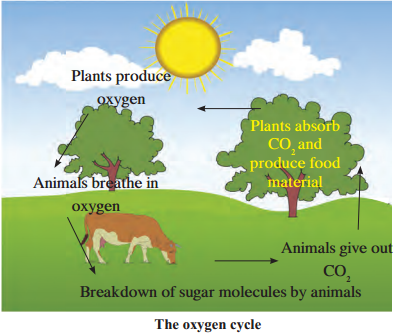
- Oxygen forms 21% of the atmosphere. It is also present in the hydrosphere and lithosphere. The circulation and recycling of oxygen within the biosphere is called the oxygen cycle.
- This cycle, includes both the biotic and abiotic components. Oxygen is continuously produced as well as used up in the atmosphere.

- Oxygen is highly reactive and it readily reacts with other elements and compounds.
- As oxygen is found in various forms like molecular oxygen (Oz), water (H,0), carbon dioxide (C02), inorganic compounds etc, the oxygen cycle of the biosphere is extremely complex.
- Oxygen is released in the process of photosynthesis, whereas it is used up in processes like respiration, combustion, decomposition, corrosion, rusting, etc.
5. What would you do to help maintain the equilibrium in the various bio-geochemical cycles? Explain in brief.
Answer:
- Bio-geo-chemical cycles always involve the achievement of equilibrium, i.e., a balance in the cycling of the nutrients between the spheres.
- Human activities that are known to be environmentally unfriendly can disrupt this balance.
- We should avoid deforestation as trees play an important role in maintaining the balance.
- We should avoid overuse of fertilizers. The fertilizers get washed away in the nearby water bodies disrupting the balance.
- Avoid burning of fossil fuels as these fuels release a large amount of carbon in the form of carbondioxide, thus disrupting the balance.
- Vehicular emissions is another contributor to the disruption in balance of the various cycles.
- These emissions release oxides of nitrogen and carbon and other hazardous air pollutants.
- So, we must use better quality fuel like CNG or ethanol to reduce vehicular emissions.
6. Explain in detail the inter-relationship between the food chain and food web.
Answer:
- Interaction go on continuously between producers, consumers and decomposers.
- There is a definite sequence in these interactions which is called the food chain.
- Each chain consists of four, five or more links.
- An ecosystem consists of many food chains that are interconnected at various levels. Thus, a food web is formed.
- An organism may be the prey for many other organisms.
- For example, an insect feeds upon leaves of various plants but the same insect is the prey for different animals like frog, wall lizard, birds, etc.
- Thus, many food chains interconnected together form an intricate web called as food web.
7. State the different types of bio-geochemical cycles and explain the importance of those cycles.
Answer:
- The different types of bio-geo-chemical cycles are nitrogen, oxygen, carbon, water vapour, iron, calcium, phosphorus, etc.
- Nutrients, necessary for the growth of the organisms are continuously transferred from abiotic to biotic factors and biotic to abiotic factors within an ecosystem.
- These cycles operate continuously through the medium of the biosphere formed by the lithosphere, atmosphere and hydrosphere.

- (iv) The recycling of biological, geological and chemical sources of nutrients takes place through these cycles.
- Nutrients from the biosphere enter the bodies of plants and animals. Eventually, after death, all types of consumers are decomposed by decomposers like bacteria and fungi and they are again released into the biosphere and are used again by living organisms.
- Therefore, these cycles help in maintaining the flow of nutrients and energy through ecosystem and maintaining the equilibrium in the ecosystem.
8. Explain the following with suitable examples.
a. What type of changes occur in the amount of energy during its transfer from plants to apex consumers?
Answer:
- Plants of the ecosystem store some of the solar energy in the form of food.
- Before reaching the decomposers, this energy is passed on from one trophic level to the next.
- At every trophic level, some amount of energy is used by the organism for its own life processes and some amount of energy is lost to the surroundings.
- Decomposers dissipate some amount of energy in the form of heat.
- However, no part of the energy ever returns to the Sun. Hence, such passage of energy is referred to as ‘one way’ transport.
- Therefore, energy is maximum at the base of the pyramid and is least at the apex, e.g.
- phytoplanktons which form the base of the pyramid have 10,000 kcal of energy while humans at the apex have 10 kcal of energy.
b. What are the differences between flow of matter and of energy in an ecosystem? Why?
Answer:
| Flow of matter | Flow of energy |
| (i) It involves the circulation and recycling of nutrients in a cyclic manner within the biosphere. | (i) It involves the flow of energy from one trophic level to another in a unidirectional or non-cyclic manner. |
| (ii) There is no dissipation of matter at any level. | (ii) There is the dissipation of energy at every level. |
| (iii) Biosphere is the source of nutrients. | (iii) The Sun is the most important source of energy. |
Class 9 Science Chapter 7 Energy Flow in an Ecosystem Intext Questions and Answers
Can you recall?
7 Energy Flow In An Ecosystem Exercises Question 1.
What is meant by nitrogen fixation?
Answer:
The process of conversion of Nitrogen into nitrates and nitrites is called Nitrogen fixation.
![]()
Energy Flow In An Ecosystem Class 9 Questions And Answers Question 2.
Which microbes bring about the process of nitrogen fixation?
Answer:
Rhizobium present in the root nodules of the leguminous plant bring about the process of nitrogen fixation.
Class 9 Science Chapter 7 Energy Flow In An Ecosystem Question 3.
What is meant by ‘ecosystem’?
Answer:
An ecosystem includes all of the living things like plants, animals and other organisms in a given area, interacting with each other and also with non-living environmental factors like weather, earth, sun, soil, climate and atmosphere.
Energy Flow In An Ecosystem Class 9 Exercise 1Question 4.
Which are different types of ecosystems?
Answer:
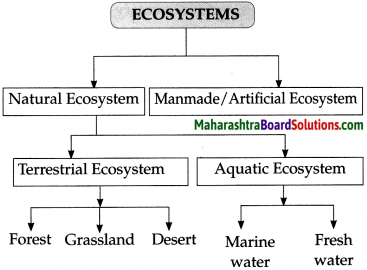
Class 9 Science Chapter 7 Energy Flow In An Ecosystem Exercise Question 5.
How do interactions take place between biotic and abiotic factors of an ecosystem?
Answer:
- Abiotic factors include non-living factors such as soil, water etc. and biotic factors include all living organisms.
- Both these abiotic and biotic ecosystems are connected through various bio-geo-chemical cycles.
- These connections/interactions are important for the flow of matter and flow of energy.
Class 9 Science Chapter 7 Energy Flow in an Ecosystem Additional Important Questions and Answers
Choose and write the correct option:
Question 1.
An intricate network of food chains is called
(a) Biosphere
(b) Food web
(c) Energy pyramid
(d) Ecosystem
Answer:
(b) food web
![]()
Question 2.
Fungi and other microbes are called
(a) Producers
(b) Consumers
(c) Decomposers
(d) Omnivores
Answer:
(c) decomposers
Question 3.
Oxygen forms of the atmosphere.
(a) 78%
(b) 21%
(c) 10%
(d) 90%
Answer:
(b) 21%
Question 4.
Microbes which do not need oxygen are called
(a) Producers
(b) Aerobes
(c) Anaerobes
(d) Decomposers
Answer:
(c) anaerobes
![]()
Question 5.
The pattern of energy exchange in an ecosystem is called a
(a) Food chain
(b) Food web
(c) Pyramid of energy
(d) Trophic levels
Answer:
(c) Pyramid of energy
Question 6.
Carbon atoms are circulated and recycled through
(a) Nitrification and denitrification
(b) Photosynthesis and respiration
(c) Respiration and nitrification
(d) Photosynthesis and ammonification
Answer:
(b) photosynthesis and respiration
Question 7.
Conversion of ammonia into a nitrite and then nitrate is called
(a) Nitrogen fixation
(b) Denitrification
(c) Nitrification
(d) Ammonification
Answer:
(c) nitrification
![]()
Question 8.
The conversion of nitrogen compounds into gaseous nitrogen is called
(a) Nitrogen fixation
(b) Denitrification
(c) Ammonification
(d) Nitrification
Answer:
(b) denitrification
Question 9.
is an important component of proteins and nucleic acids.
(a) Carbon
(b) Nitrogen
(c) Phosphorus
(d) Oxygen
Answer:
(b) Nitrogen
Question 10.
Amount of matter and energy from the lowest level to the highest level.
(a) decreases
(b) increases
(c) remains the same
(d) multiplies
Answer:
(a) decreases
![]()
Question 11.
is the most important source of energy in any ecosystem.
(a) The Sun
(b) The Moon
(c) Producers
(d) Decomposers
Answer:
(a) The Sun
Question 12.
Flow of energy in an ecosystem is
(a) cyclical
(b) two way transport
(c) o ne way transport
(d) to and fro transport
Answer:
(c) one way transport
Question 13.
The Indian Institute of Ecology and Environment, Delhi, has published
(a) Invasive species in a changing Environment
(b) Encyclopaedia of Ecology and Environment
(c) Environment and Ecology Magazine
(d) Biodiversity and Disaster Management
Answer:
(b) Encyclopaedia of Ecology and Environment
Question 14.
Oxygen is released in the process of
(a) Respiration
(b) Decomposition
(c) Combustion
(d) Photosynthesis
Answer:
(d) photosynthesis
![]()
Question 15.
cycle is a gaseous cycle.
(a) Carbon
(b) Phosphorus
(c) Calcium
(d) Iron
Answer:
(a) Carbon
Question 16.
is a sedimentary cycle.
(a) Carbon
(b) Nitrogen
(c) Oxygen
(d) Calcium
Answer:
(d) Calcium
Question 17.
is a primary consumer.
(a) Elephant
(b) Frog
(c) Owl
(d) Tiger
Answer:
(a) Elephant
Question 18.
is a secondary consumer.
(a) Grasshopper
(b) Elephant
(c) Frog
(d) Human
Answer:
(c) Frog
![]()
Question 19.
Tiger is a /an
(a) Producer
(b) Primary consumer
(c) Apex consumer
(d) Secondary consumer
Answer:
(c) apex consumer
Question 20.
Carbon dioxide is released into the atmosphere through
(a) burning of fossil fuels
(b) volcanic activity
(c) respiration
(d) all of these
Answer:
(d) all of these
Question 21.
in 1942 studied the food chain and energy flow through it
(a) Linderman
(b) Darwin
(c) Calypso
(d) Chu win lee
Answer:
(a) Linderman
Question 22.
fter the death of apex consumers, energy becomes available to.
(a) Decomposers
(b) Producers
(c) Herbivores
(d) Carnivores
Answer:
(a) Decomposers
![]()
Question 23.
Green plants of the ecosystem store in the form of food.
(a) Solar energy
(b) Chemical energy
(c) Thermal energy
(d) Electrical energy
Answer:
(a) Solar energy
Question 24.
Plants convert carbon dioxide into by the process of photosynthesis.
(a) Carbohydrates
(b) Proteins
(c) Fats
(d) Vitamins
Answer:
(a) Carbohydrates
Question 25.
Carnivores feed upon
(a) Decomposers
(b) Herbivores
(c) Producers
(d) Secondary producers
Answer:
(b) Herbivores
![]()
Question 26.
is used up in the processes like respiration, combustion, decomposition, corrosion, rusting, etc.
(a) Nitrogen
(b) Oxygen
(c) Argon
(d) Helium
Answer:
(b) Oxygen
Question 27.
Nitrogen forms % of the atmosphere.
(a) 79
(b) 78
(c) 21
(d) 2
Answer:
(b) 78
Question 28.
Most organisms cannot use the free form of
(a) Oxygen
(b) Nitrogen
(c) Carbon dioxide
(d) Carbon monoxide
Answer:
(b) Nitrogen
Question 29.
first proposed the concept of Ecological Pyramid in 1927.
(a) Darwin
(b) Newton
(c) Elton
(d) Edison
Answer:
(c) Elton
![]()
Question 30.
Ecological Pyramid is called
(a) Hills
(b) Mounts
(c) Eltonian
(d) Darwinism
Answer:
(c) Eltonian
Question 31.
is produced from oxygen through various atmospheric processes.
(a) Nitrogen dioxide
(b) Nitrites
(c) Ozone
(d) CFC
Answer:
(c) Ozone
Question 32.
Interactions between producers, consumers and saprophytes in a definite sequence is called
(a) Links
(b) Internet
(c) Food chain
(d) Connectors
Answer:
(c) Food chain
Question 33.
Many food chains interconnected at various levels is called
(a) Links
(b) Internet
(c) Connectors
(d) Food web
Answer:
(d) Food web
![]()
Question 34.
Decomposers dissipate some amount of energy in the form of
(a) Light
(b) Electricity
(c) Sound
(d) Heat
Answer:
(d) Heat
Question 35.
The flow of nutrients in an ecosystem is
(a) Non- cyclic
(b) Mono directional
(c) Reverse directional
(d) Cyclical
Answer:
(d) Cyclical
Question 36.
The cyclical flow of nutrients within an ecosystem is called
(a) Biological cycle
(b) Chemical cycle
(c) Solar cycle
(d) Bio-geo chemical cycle
Answer:
(d) Bio-geo chemical cycle
![]()
Question 37.
is an accumulation of the main abiotic gaseous nutrient materials found in the earth’s atmosphere.
(a) Gaseous cycle
(b) Water cycle
(c) Solar cycle
(d) Lunar cycle
Answer:
(a) Gaseous cycle
Question 38.
Oxygen is released into the atmosphere by the process of
(a) Photosynthesis
(b) Respiration
(c) Oxidation
(d) Decomposition
Answer:
(a) Photosynthesis
Question 39.
Charles Elton studied the of the Beer islands in England..
(a) Tundra ecosystem
(b) Mediterranean ecosystem
(c) Equatorial ecosystem
(d) Taiga ecosystem
Answer:
(a) Tundra ecosystem
![]()
Question 40.
in 1942 studied the food chain and energy flow through it.
(a) Charles Elton
(b) Lindeman
(c) Robert Whittaker
(d) Eichler
Answer:
(b) Lindeman
Question 41.
After the death of apex consumers, energy becomes available to
(a) Primary consumer
(b) Secondary consumer
(c) Decomposer
(d) Sun
Answer:
(c) Decomposer
Question 42.
Nitrogen forms % of the atmosphere.
(a) 28%
(b) 78%
(c) 48%
(d) 82%
Answer:
(b) 78%
![]()
Question 43.
first proposed the concept of the Ecological Pyramid in 1927.
(a) Charles Elton
(b) Lindeman
(c) Eichler
(d) John Muir
Answer:
(a) Charles Elton
Question 44.
Oxygen is released into the atmosphere by the process of
(a) respiration
(b) Photosynthesis
(c) Combustion
(d) All of these
Answer:
(b) Photosynthesis
Find the odd man out:
Question 1.
Photosynthesis, Respiration, Decomposition, Forest Fires
Answer:
Forest Fires
Question 2.
Combustion, Corrosion, rusting, formation of ozone, Photosynthesis
Answer:
Photosynthesis
Question 3.
Biological nitrogen fixation, ammonification, nitrification, denitrification, industrial nitrogen fixation
Answer:
Industrial nitrogen fixation
![]()
Question 4.
Frog, Owl, Squirrel, Fox
Answer:
Squirrel
Question 5.
Grasshopper, squirrel, elephant, lion
Answer:
Lion
Question 6.
Nitrogen cycle, oxygen cycle, carbon cycle, phosphorus cycle
Answer:
Phosphorus cycle
Question 7.
Photosynthesis, Nitrification, Ammonification, Denitrification
Answer:
Photosynthesis
Find out the correlation:
1. Grasshopper : Primary consumer :: Tiger : ………………..
2. Owl : Secondary consumer :: Squirrel : ………………..
3. Flow of energy : One way :: Flow of nutrients : ………………..
4. Plants : Producers :: Bacteria and Fungi : ………………..
5. Nitrogen : Gaseous cycle :: Phosphorus : ………………..
6. Oxygen : 21% :: Nitrogen : ………………..
7. Photosynthesis: Carbon cycle:: Ammonification : ………………..
8. Respiration : Oxygen cycle :: Nitrification : ………………..
9. Respiration : Biotic process :: Combustion : ………………..
10. Microbes using oxygen : Aerobes :: Microbes not using oxygen : ………………..
Answer:
(1) Apex consumer
(2) Primary consumer
(3) Cyclic
(4) Decomposers
(5) Sedimentary cycle
(6) 78%
(7) Nitrogen cycle
(8) Nitrogen cycle
(9) Abioticprocess
(10) Anaerobes
![]()
Q.l. (B) 3. Difference between:
(1) Azotobacter and Rhizobium
Answer:
| Azotobacter | Rhizobium |
| Free-living nitrogen-fixing bacteria | Symbiotic nitrogen-fixing bacteria |
(2) Biotic components and Abiotic component
Answer:
| Biotic components | Abiotic component |
| Living component of an ecosystem | Physical/Chemical non-living components of an ecosystem |
(3) Producers and Herbivores
Answer:
| Producers | Herbivores |
| They are present in the 1st trophic level | They are present in the 2nd trophic level |
(4) Carnivores and Herbivores
Answer:
| Carnivores | Herbivores |
| They depend on Herbivores for nutrition | They depend on Producers for nutrition |
(5) Phosphorus and Carbon
Answer:
| Phosphorus | Carbon |
| It cycles through the Sedimentary cycle | It cycles through the Gaseous cycle |
(6) Food chain and Food web
Answer:
| Food chain | Food web |
| Interactions between producers, consumers and decomposers in a definite sequence is called as a food chain. | The interconnection among different food chains in an ecosystem at various levels is called as a food web |
State whether the following statements are true or false. Correct the false statements:
(1) Herbivores occupy the third trophic level in a food chain.
(2) Apex consumers use herbivores and carnivores as their food.
(3) Humans are apex consumers.
(4) Omnivores feed only on carnivores.
(5) A food chain has two links.
(6) The number of consumers in a food web is fixed.
(7) The amount of matter and energy goes on increasing at every level in a food chain.
(8) Robert Brown first proposed the concept of Ecological Pyramid.
(9) After the death of apex consumers, the energy becomes available to decomposers.
(10) The gaseous cycle is a speedier cycle than the sedimentary cycle. ![]()
(11) Climatic changes and human activities seriously affect the speed, intensity and equilibrium of bio-geo-chemical cycles.
(12) Carbon dioxide is released in the atmosphere through photosynthesis.
(13) The equilibrium of oxygen and carbon dioxide gases is maintained by decomposers.
(14) The conversion of ammonia into a nitrite and then nitrate is called nitrogen fixation.
(15) Conversion of nitrogen compounds into gaseous nitrogen is called nitrogen fixation.
(16) Release of ammonia through decomposition of dead plants and excretory wastes of organisms is called ammonification.
(17) The cyclic flow of nutrients within an ecosystem is called Energy Pyramid.
Answer:
(1) False, herbivores occupy the second trophic level in a food chain as they are directly dependent on producers.
(2) True
(3) True
(4) False. Omnivores feed on both herbivores and carnivores.
(5) False. A food chain consists of four, five or more links.
(6) False. A food web can have many consumers.
(7) False. The amount of matter and energy goes on decreasing at every level in a food chain.
(8) False. Charles Elton first proposed the concept of Ecological Pyramid.
(9) True
(10) True
(11) True
(12) False. Carbon dioxide is released in the atmosphere through respiration, burning of fossil fuels and wood, forest fires and volcanic activity. (13) False. The equilibrium of oxygen and carbon dioxide gases is maintained by plants.
(14) False. The conversion of ammonia into a nitrite and then nitrate is called nitrification.
(15) False. Conversion of nitrogen compounds into gaseous nitrogen is called denitrification.
(16) True
(17) False. The cyclic flow of nutrients within an ecosystem is called bio-geochemical cycle.
Name the following:
Question 1.
The animals that feed on herbivores.
Answer:
Carnivores.
Question 2.
Organisms that feed on herbivores and carnivores.
Answer:
Omnivores.
![]()
Question 3.
Two examples of primary consumers.
Answer:
Grasshopper, squirrel.
Question 4.
Two examples of secondary consumers.
Answer:
Frog, owl.
Question 5.
Two examples of Apex consumers.
Answer:
Lion, tiger.
Question 6.
Levels in the food chain.
Answer:
Trophic level.
Question 7.
Organisms that decompose the dead bodies of plants and animals.
Answer:
Decomposers.
Question 8.
Process which releases oxygen.
Answer:
Photosynthesis.
Question 9.
Release of ammonia through decomposition of dead bodies and excretory wastes of organisms.
Answer:
Ammonification.
Question 10.
Conversion of nitrogen into nitrates and nitrites through atmospheric, industrial and biological processes.
Answer:
Nitrogen fixation.
One line answers:
Question 1.
What is Food chain?
Answer:
Interactions between producers, consumers and decomposers in a definite sequence is called as a food chain.
![]()
Question 2.
What is Food web?
Answer:
The interconnection among different food chains in an ecosystem at various levels is called as a food web.
Question 3.
What is Trophic level?
Answer:
A trophic level is the step at which the organism obtains its food in the chain.
Question 4.
What is Pyramid of energy?
Answer:
The pattern of energy exchange in an ecosystem is called a ‘Pyramid of energy’.
Question 5.
What is Bio-geo-chemical cycle?
Answer:
The cyclical flow of nutrients within an ecosystem is called bio-geo-chemical cycle.
Question 6.
What is Carbon cycle?
Answer:
The circulation and recycling of carbon from the atmosphere to living organisms and aher their death back to the atmosphere is called the carbon cycle.
Question 7.
What is Oxygen cycle?
Answer:
The circulation and recycling of oxygen within the biosphere is called as oxygen cycle.
Question 8.
What is Nitrogen cycle?
Answer:
The circulation and recycling of nitrogen gas into the form of different compounds through various biotic and abiotic processes in nature is called the nitrogen cycle.
![]()
Question 9.
What is Nitrogen fixation?
Answer:
The process of conversion of free nitrogen gas of the atmosphere into nitrogen compounds is called of nitrogen fixation.
Distinguish between:
Question 1.
Gaseous Cycle and Sedimentary Cycle.
Answer:
| Gaseous Cycle | Sedimentary Cycle |
| (i) It is an accumulation of the main abiotic gaseous nutrient materials found in the earth’s atmosphere.
(ii) It includes nitrogen, oxygen, carbon dioxide, water vapour etc. |
(i) It is an accumulation of the main abiotic nutrient materials found in the soil, sediment and sedimentary rocks, etc. of the earth.
(ii) It includes soil components like iron, calcium, phosphorus etc. |
Question 2.
Carbon Cycle and Nitrogen Cyde.
Answer:
| Carbon Cycle | Nitrogen Cycle |
| (i) The circulation and recycling of carbon from the atmosphere to living organisms and after their death back to the atmosphere is called the carbon cycle. | (i) The circulation and recycling of nitrogen into the form of different compounds through various biotic and abiotic processes in nature is called the nitrogen cycle. |
| (ii) Main processes involved in the carbon cycle are photosynthesis and respiration. | (ii) Main processes involved in the nitrogen cycle are nitrogen fixation, ammonification, nitrification and denitrification. |
| (iii) Carbon in the form of carbon dioxide is directly absorbed by plants for photosynthesis. | (iii) Nitrogen gas cannot be directly absorbed by plants. So nitrogen is fixed by the process of nitrogen fixation and then absorbed from the soil. |
Complete the flow chart:
Question 1.
Energy Pyramid.

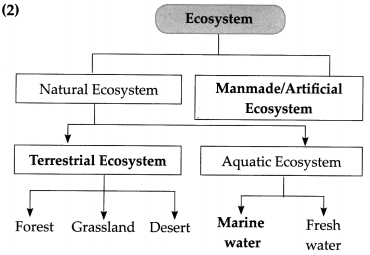
![]()
Question 3.
Nitrogen Cycle

Question 4.
Bio-Geo Chemical cycle

Write short notes on:
Question 1.
Trophic level.
Answer:
- Each level in the food chain is called a trophic level.
- A trophic level is the step at which the organism obtains its food in the chain.
- The amount of matter and energy gradually decreases from producers at the lowest level to the top consumers at the highest level.
Question 2.
Food web.
Answer:
- An ecosystem consists of many food chains that are interconnected at various levels. This is called food web.
- An organism may be the prey for many other organisms.
- For example, an insect feeds upon leaves of various plants but the same insect is the prey for different animals like wall lizards, birds etc.

- This forms an intricate web instead of a linear food chain. Such an intricate network is called as food web.
- Generally food webs are formed everywhere in nature.
Question 3.
Energy Pyramid.

Answer:
- Each level in the food chain is called a trophic level.
- The amount of matter and energy gradually decreases from producers at the lowest level to the top consumers at the highest level.
- The initial quantity of energy goes on decreasing at every level of energy exchange.
- Similarly, the number of organisms also decreases from the lowest level to the highest level.
- This pattern of energy exchange in an ecosystem is called a Pyramid of energy.
Explain the following statements
Question 1.
justify the statements
(a) Producers form the first trophic level in the food chain. Herbivores depend directly on producers.
(b) The flow of nutrients in an ecosystem is cyclic.
(c) Plants in an ecosystem are called autotrophs.
Answer:
- So herbivores form the second trophic level, whereas carnivores depend on herbivores, so they form the third trophic level in the food chain.
- The nutrients are circulated and recycled from the biosphere to living organisms and after their death back to the biosphere.
- They produce their own food by the process of photosynthesis. All animals in an ecosystem directly or indirectly depend on plants for food.
![]()
Explain the diagram
Question 1.
Food chain in a forest ecosystem:
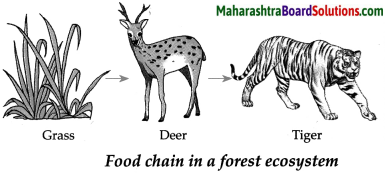
Answer:
- In a forest ecosystem, grass is eaten by a deer, which in turn is eaten by a tiger.
- The grass, deer and tiger form a food chain.
- In this food chain, energy flows from the grass (producer) to the deer (primary consumer) to the tiger (secondary consumer).
Question 2.
Food chain in an aquatic ecosystem (Pond)
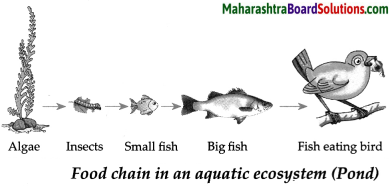
Answer:
- In a aquatic ecosystem algae are eaten by insects.
- Insects are eaten by small fish, small fish are in turn eaten by big fish.
- And the big fish are eaten by fish eating birds.
- In this food chain, energy flows from the algae (producer) to the insects (primary consumers) to the small fish (secondary consumers) to the big fish (tertiary consumer) and to the fish eating birds (apex consumer).
Question 3.
Carbon cycle

Answer:
- The circulation and recycling of carbon from the atmosphere to living organisms and after their death back to the atmosphere is called carbon cycle.
- Main processes involved in carbon cycle are photosynthesis and respiration.
- Carbon in the form of carbon dioxide is directly absorbed by plants for photosynthesis
![]()
Question 4.
Nitrogen cycle
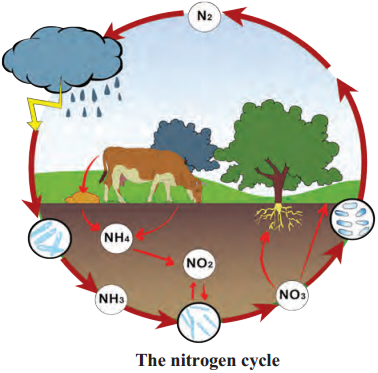
Answer:
(i) The circulation and recycling of nitrogen into the form of different compounds through various biotic and abiotic processes in nature is called the nitrogen cycle.
(ii) Main processes involved in nitrogen cycle are nitrogen fixation, ammonification, nitrification and denitrification.
(iii) Nitrogen gas cannot be directly absorbed by plants. So nitrogen is fixed by the process of nitrogen fixation and then absorbed from the soil.
Question 5.
Oxygen cycle
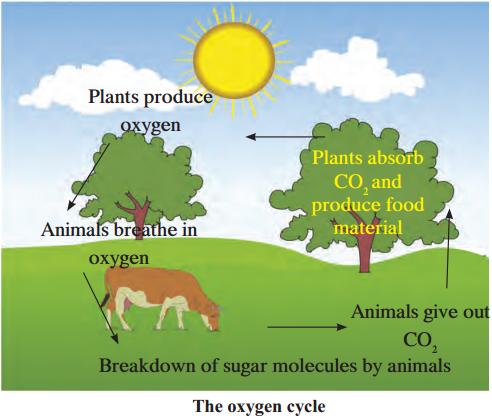
Answer:
- Oxygen forms 21% of the atmosphere. It is also present in the hydrosphere and lithosphere.
- Circulation and recycling of oxygen within the biosphere is called the oxygen cycle.
- This cycle, includes both the biotic and abiotic components.
- Oxygen is continuously produced as well as used up in the atmosphere.
- Oxygen is highly reactive and it readily reacts with other elements and compounds.
- As oxygen is found in various forms like molecular oxygen (O2), water (H2O), carbon dioxide (CO2), inorganic compounds etc, the oxygen cycle of the biosphere is extremely complex.
- Oxygen is released in the process of photosynthesis, whereas it is used up in processes like respiration, combustion, decomposition, corrosion, rusting, etc.
![]()
Answers based on figures.
Question 1.
Nitrogen Cycle
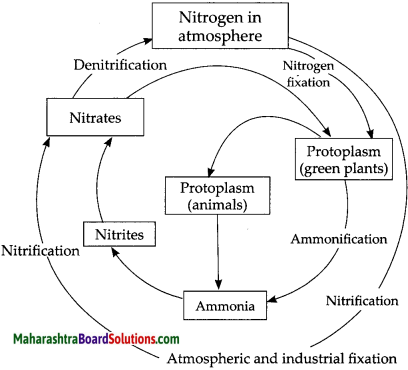
Answer:
- Oxygen forms 21% of the atmosphere. It is also present in the hydrosphere and lithosphere.
- The circulation and recycling of oxygen within the biosphere is called the oxygen cycle.
- This cycle, includes both the biotic and abiotic components.
- Oxygen is continuously produced as well as used up in the atmosphere.
- Oxygen is highly reactive and it readily reacts with other elements and compounds.
- As oxygen is found in various forms like molecular oxygen (O2), water (H2O), carbon dioxide (CO2), inorganic compounds etc, the oxygen cycle of the biosphere is extremely complex.
- Oxygen is released in the process of photosynthesis, whereas it is used up in processes like respiration, combustion, decomposition, corrosion, rusting, etc.
Answers based on figures.
Question 1.
Nitrogen Cycle
(i) Is nitrogen a reactive gas?
Answer:
Nitrogen in its atmospheric state non-reactive gas
(ii) Name process of nitrogen conversion from atmosphere to green plants.
Answer:
Nitrogen fixation is the process of nitrogen conversion atmosphere to green plants
![]()
(iii) Name the process of converting usable nitrogenous products into atmospheric inert nitrogen.
Answer:
Denitrification is the process of converting usable nitrogenous products into atmospheric inert nitrogen
(iv) Animals produce which product of nitrogen?
Answer:
Animals produce ammonia as a product of nitrogen
(v) Name two nitrifying organisms.
Answer:
Azotobacter and Rhizobium are the two nitrifying organisms
(vi) Which type of bio-geo-chemical cycles does nitrogen follow?
Answer:
Nitrogen follows gaseous and sedimentary bio-geo-chemical cycles
Question 2.
Carbon cycle
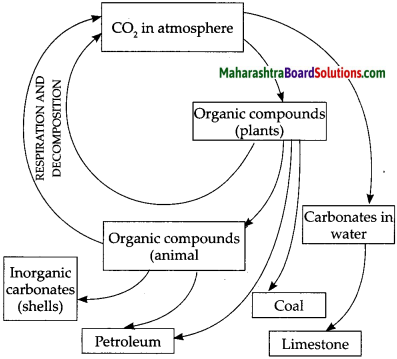
(i) Is carbon dioxide gas freely available in the atmosphere?
Answer:
Carbon dioxide gas is freely available in the atmosphere
![]()
(ii) How is carbon found in water?
Answer:
Carbon is found in water in the form of carbonates
(iii) How are we using carbon as a fuel?
Answer:
Fossil fuels are a form of carbon which are used as fuel by us
(iv) How to plants use carbon as their food source?
Answer:
Plants take up carbon in photosynthesis and convert it into starch which is their food source
(v) How do animals use carbon?
Answer:
Animals use carbon in form of organic compounds and inorganic compounds
(vi) Which type of bio-geo-chemical cycles does carbon follow?
Answer:
Carbon follows gaseous and sedimentary bio-geo-chemical cycles
Question 3.
Oxygen cycle
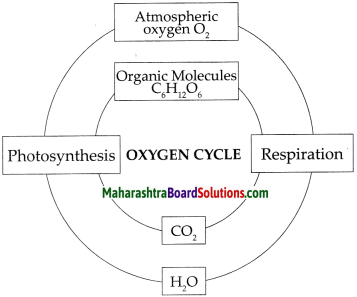
(i) Is oxygen gas freely available in the atmosphere?
Answer:
Oxygen gas is freely available in the atmosphere
![]()
(ii) How is oxygen used by animals?
Answer:
Oxygen is used in respiration by the animals
(iii) How are we using carbon as a fuel?
Answer:
Fossil fuels are a form of carbon which are used as fuel by us
(iv) How to plants use carbon as their food source?
Answer:
Plants take up carbon in photosynthesis and convert it into starch which is their food source
(v) How do animals use carbon?
Answer:
Animals use carbon in form of organic compounds and inorganic compounds
(vi) Which type of bio-geo-chemical cycles does carbon follow?
Answer:
Carbon follows gaseous and sedimentary biogeo-chemical cycles
Question 4.
Food web
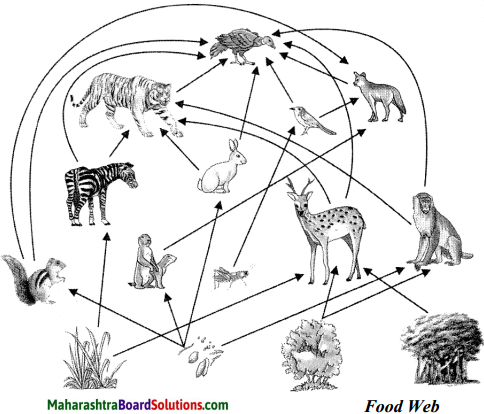
(i) What is the basic unit of food web?
Answer:
The basic unit of food web is food chain
![]()
(ii) Which organisms are on the 1st level of this food web?
Answer:
Producers are p. the 1st level of this food web
(iii) What are the animals which depend on producers directly for nutrition called?
Answer:
The animals which depend on producers directly for nutrition are called Herbivores
(iv) What are the animals which eat any type of food for nutrition called?
Answer:
The animals which eat any type of food for nutrition are called Omnivore
(v) What will happen if one animal in the food chain goes extinct?
Answer:
If one animal in the food chain goes extinct the entire food chain collapse
(vi) What are the factors badly affecting the food web?
Answer:
Factors like hunting, pollution, deforestation, human-animal conflicts etc. are the factors badly affecting the food web
Complete the paragraph
(1) Elemental oxygen is normally found in the form of a diatomic molecule. However, in the upper reaches of the atmosphere, a molecule containing three atoms of oxygen is found. This would mean a formula of 03 and this is called ozone. Unlike the normal diatomic molecule of oxygen, ozone is poisonous and we are lucky that it is not stable nearer to the Earth’s surface. But it performs an essential function where it is found. It absorbs harmful radiations from the Sun. This prevents those harmful radiations from reaching the surface of the Earth where they may damage many forms of life.
Recently it was discovered that this ozone layer was getting depleted. Various man-made compounds like CFCs (carbon compounds having both fluorine and chlorine) which are very stable and not degraded by any biological process) were found to persist in the atmosphere. Once they reached the ozone layer, they would react with the ozone molecules. This resulted in a reduction of the ozone layer and recently they have discovered a hole in the ozone layer above the Antarctica. It is difficult to imagine the consequences for life on Earth if the ozone layer dwindles further, but many people think that it would be better not to take chances. These people advocate working towards stopping all further damage to the ozone layer.
![]()
(2) The utilisation of glucose to provide energy to living things involves the process of respiration in which oxygen may or may not be used to convert glucose back into carbon dioxide. This carbon dioxide then goes back into the atmosphere. Another process that adds to the carbon dioxide in the atmosphere is the process of combustion where fuels are burnt to provide energy for various needs like heating, cooking, transportation and industrial processes.
In fact, the percentage of carbon dioxide in the atmosphere is said to have doubled since the industrial revolution when human beings started burning fossil fuels on a very large scale. Carbon, like water, is thus cycled repeatedly through different forms by the various physical and biological activities. Heat is trapped by glass, and hence the temperature inside a glass enclosure will be much higher than the surroundings. This phenomenon was used to create an enclosure where tropical plants could be kept warm during the winters in colder climates. Such enclosures are called greenhouses.
Greenhouses have also lent their name to an atmospheric phenomenon. Some gases prevent the escape of heat from the Earth. An increase in the percentage of such gases in the atmosphere would cause the average temperatures to increase worldwide and this is called the greenhouse effect. Carbon dioxide is one of the greenhouse gases. An increase in the carbon dioxide content in the atmosphere would cause more heat to be retained by the atmosphere and lead to global warming.
(3) Nitrogen gas makes up 78% of our atmosphere and nitrogen is also a part of many molecules essential to life like proteins, nucleic acids (DNA and RNA) and some vitamins. Nitrogen is found in other biologically important compounds such as alkaloids and urea too. Nitrogen is thus an essential nutrient for all life-forms and life would be simple if all these life-forms could use the atmospheric nitrogen directly. However, other than a few forms of bacteria, life-forms are not able to convert the comparatively inert nitrogen molecule into forms like nitrates and nitrites which can be taken up and used to make the required molecules.
![]()
These nitrogen-fixing bacteria may be free-living or be associated with some species of dicot plants. Most commonly, the nitrogenfixing bacteria are found in the roots of legumes (generally the plants which give us pulses) in special structures called root nodules. Other than these bacteria, the only other manner in which the nitrogen molecule is converted to nitrates and nitrites is by a physical process. During lightning, the high temperatures and pressures created in the air convert nitrogen into oxides of nitrogen. These oxides dissolve in water to give nitric and nitrous acids and fall on land along with rain. These are then utilised by various lifeforms.
Read the paragraph and answer the questions:
(1) Nitrogen cycle
The nitrogen cycle is the biogeochemical cycle by which nitrogen is converted into multiple chemical forms as it circulates among the atmosphere, terrestrial, and marine ecosystems. The conversion of nitrogen can be carried out through both biological and physical processes. Important processes in the nitrogen cycle include fixation, ammonification, nitrification, and denitrification, The majority of Earth’s atmosphere (78%) is atmosphere nitrogen, making it the largest source of nitrogen.
However, atmospheric nitrogen has limited availability for biological use, leading to a scarcity of usable nitrogen in many types of ecosystems. The nitrogen cycle is of particular interest to ecologists because nitrogen availability can affect the rate of key ecosystem processes, including primary production and decomposition, Human activities such as fossil fuel combustion, use of artificial nitrogen fertilizers, and release of nitrogen in wastewater have dramatically altered the global nitrogen cycle. Human modification of the global nitrogen cycle can negatively affect the natural environment system and also human health.
(i) Why nitrogen cycle is called bio-geochemical cycle?
Answer:
Nitrogen cycle is called bio-geochemical cycle as it undergoes biological as well as geochemical processes.
(ii) Why is nitrogen cycle important to us?
Answer:
Nitrogen cycle is important to us as nitrogen availability can affect the rate of key ecosystem processes, including primary production and decomposition.
![]()
(iii) Name important process of nitrogen cycle.
Answer:
Important processes in the nitrogen cycle include fixation, ammonification, nitrification, and denitrification.
(iv) What can affect the nitrogen cycle negatively?
Answer:
Human modification of the global nitrogen cycle can negatively affect the natural environment system and also human health.
(v) Which human activities change the nitrogen cycle?
Answer:
Human activities such as fossil fuel combustion, use of artificial nitrogen fertilizers, and release of nitrogen in wastewater have dramatically altered the global nitrogen cycle.
(2) Food web
A food chain is a linear network of links in a food i web starting from producer organisms (such asgrass or trees which use radiation from the Sun to make their food) and ending at apex predator species (like grizzly bears or killer whales), detritivores (like earthworms or woodlice), ordecomposer species (such as fungi or bacteria), A food chain also shows how the organisms are related with each other by the food they eat. Each level of a food chain represents a different trophiclevel. A food chain differs from a food web, because the complex network of different animal’s feeding relations are aggregated and the chain only follows a direct, linear pathway of one animal at a time.
Natural interconnections between food chains make it a food web. A common metric usedto the quantify food web trophic structure is foodi chain length. In its simplest form, the length of a chain is the number of links between a trophici consumer and the base of the web and the meanchain length of an entire web is the arithmetic average of the lengths of all chains in a food web. The food chain is an energy source diagram. Many food webs have a keystone species. A keystonespecies is a species that has a large impact on thei surrounding environment and can directly affectthe food chain.
If this keystone species dies off it can set the entire food chain off balance. Keystonespecies keep herbivores from depleting all of thei foliage in their environment and preventing ai mass extinction. Food chains were first introduced by the Arab scientist and philosopher Al-Jahiz inthe 10th century and later popularized in a book I published in 1927 by Charles Elton, which also i introduced the food web concept.
![]()
(i) What is a food web?
Answer:
Food web is a linear network of links of food chains.
(ii) In a food web which organism are called producers?
Answer:
In a food web which organism which can produce food by photosynthesis are called producers.
(iii) What is the role of keystone species?
Answer:
Keystone species keep herbivores from depleting all of the foliage in their environment and preventing a mass extinction.
(iv) What is a keystone species?
Answer:
A keystone species is a species that has a large impact on the surrounding environment and can directly affect the food chain.
(v) What does each level of food chain represent?
Answer:
Each level of a food chain represents a different trophic level.
(3) Carbon cycle
The carbon cycle is the biogeochemical cycle by which carbon is exchanged among the biosphere, pedosphere, geosphere, hydrosphere, and atmosphere of the Earth. Carbon is the main component of biological compounds as well as a major component of many minerals such as limestone. Along with the nitrogen cycle and the water cycle, the carbon cycle comprises a sequence of events that are key to make Earth capable of sustaining life. It describes the movement of carbon as it is recycled and reused throughout the biosphere, as well as long-term processes of carbon sequestration to and release from carbon sinks.
The carbon cycle was discovered by Antoine! Lavoisier and Joseph Priestley, and popularised by Humphry Davy. Carbon in the Earth’satmosphere exists in two main forms carbon dioxide and methane. Both of these gases absorb and retain heat in the atmosphere and are partially responsible for the greenhouse effect. Methane produces a larger greenhouse effect per volume as compared to carbon dioxide, but it exists in much lower concentrations and is more short-lived than carbon dioxide, making carbon dioxide the more important greenhouse gas of the two.
Carbon dioxide is removed from the atmosphere primarily through photosynthesis and enters the terrestrial and oceanic biospheres. Carbon dioxide also dissolves directly from the atmosphere into bodies of water (ocean, lakes, etc.), as well as dissolving in precipitation as raindrops fall through the atmosphere. When dissolved in water, carbon dioxide reacts with water molecules and forms carbonic acid, which contributes to ocean acidity. It can then be absorbed by rocks through weathering. It also can acidify other surfaces it touches or be washed into the ocean.
![]()
(i) Which gas has greener house effect as compared to CO2?
Answer:
Methane gas CH4 has greener house effect as compared to CO2.
(ii) How does dissolved CO2 affect oceans?
Answer:
When dissolved in water, carbon dioxide reacts with water molecules and forms carbonic acid, which contributes to ocean acidity.
(iii) Why is carbon cycle called bio-geochemical cycle?
Answer:
The carbon cycle is the biogeochemical cycle by which carbon is exchanged among the biosphere, pedosphere, geosphere, hydrosphere, and atmosphere of the Earth.
(iv) How is carbon dioxide removed from atmosphere?
Answer:
Carbon dioxide is removed from the atmosphere primarily through photosynthesis and enters the terrestrial and oceanic biospheres.
(v) Who discovered the carbon cycle?
Answer:
The carbon cycle was discovered by Antoine Lavoisier and Joseph Priestley.
Answer the questions in detail:
Question 1.
Write the important processes of the nitrogen cycle.
Answer:
- Nitrogen fixation: Conversion of nitrogen into nitrates and nitrites through atmospheric, industrial and biological processes.
- Ammonification: Release of ammonia through decomposition of dead bodies and excretory wastes of organisms.
- Nitrification: Conversion of ammonia into a nitrite and then nitrate.
- Denitrification: Conversion of nitrogen components into gaseous nitrogen.
Make a concept diagram and explain.
Question 1.
Food chain
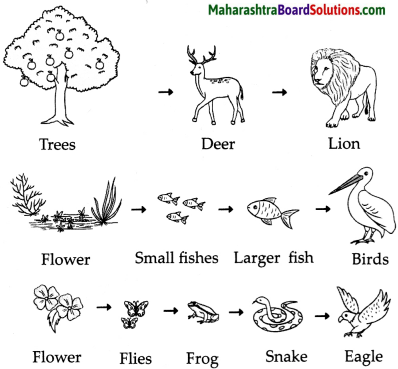
Answer:
According to the mode of nutrition the organisms are classified into producers, consumers, saprotrophs (saprophytes) and decomposers. Primary consumers are directly dependent on autotrophs (producers), e.g.: Grasshopper, squirrel, elephant) Secondary consumers use herbivores as their food, e.g.: Frog, owl, fox, etc. Apex or top consumers use herbivores and carnivores as their food. No animals feed on top consumers, e.g.: Tiger, lion, etc. Omnivores feed on herbivores and carnivores, e.g.: Humans, bear, etc. A continuous interaction between producers, consumers and decomposers in a definite sequence is called as food chain.
![]()
Food chain, in ecology is the sequence of transfers of matter and energy in the form of food from organism to organism. Food chains intertwine locally into a food web because most organisms consume more than one type of animal or plant. Plants, which convert solar energy to food by photosynthesis, are the primary food source. In a predator chain, a plant-eating animal is eaten by a flesh-eating animal. In a parasite chain, a smaller organism consumes part of a larger host and may itself be parasitized by even smaller organisms. In a saprophytic chain, microorganisms live on dead organic matter.
Question 2.
Energy pyramid
Answer:
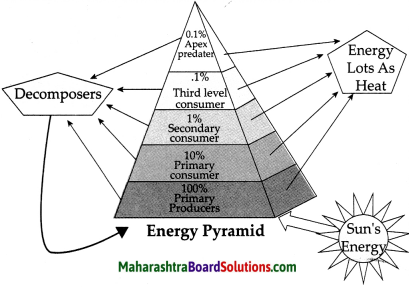
An energy pyramid is a model that shows the flow of energy from one trophic, or feeding, level to the next in an ecosystem. The model is a diagram that compares the energy used by organisms at each trophic level. The energy in an energy pyramid is measured in units of kilocalories (kcal). Energy pyramids are similar to biomass pyramids, another type of trophic pyramid that models the amount of biomass at each trophic level in an ecosystem, energy flow in ecosystems. The structure of an energy pyramid reflects the trophic structure of an ecosystem.
The pyramid is divided into trophic levels similar to those in a food chain. At the pyramid base are the producers, autotrophic organisms that make their own food from inorganic substances. All of the other organisms in the energy pyramid are consumers. These are heterotrophs, meaning that they get food energy by consuming other organisms. The consumers at each trophic level feed on organisms from the level below and are themselves consumed by organisms at the level above. Primary consumers are organisms that consume producers; thus, most primary consumers are herbivores, though some may be detrivores (organisms that feed on decaying organic matter).
![]()
Secondary consumers are carnivores that feed on primary consumers and tertiary consumers are carnivores that eat secondary consumers. In rare instances, an ecosystem may have an additional trophic level composed of quaternary consumers camivores that consume tertiary consumers’ energy pyramid. The shape of an energy pyramid shows that the amount of food energy that enters each trophic level is less than the amount that entered the level below. Approximately 90 percent of the food energy that enters a trophic level is “lost” as heat when it is used by organisms to power the normal activities of life such as breathing and digesting food the remaining 10 percent is stored in the various organisms’ tissues.
It is this latter energy that is available to be passed to the next trophic level. Thus, the higher the trophic level on the pyramid, the lower the amounts of available energy ecosystem energy transfer through an ecosystem. The number of organisms at each level decreases relative to the level below because there is less energy available to support those organisms. The top level of an energy pyramid has the fewest organisms because it has the least amount of energy. Eventually there is not enough energy left to support another trophic level; thus most ecosystems only have four trophic levels.
9th Std Science Questions And Answers:
- Laws of Motion Class 9 Questions And Answers
- Work and Energy Class 9 Questions And Answers
- Current Electricity Class 9 Questions And Answers
- Measurement of Matter Class 9 Questions And Answers
- Acids, Bases and Salts Class 9 Questions And Answers
- Classification of Plants Class 9 Questions And Answers
- Energy Flow in an Ecosystem Class 9 Questions And Answers
- Useful and Harmful Microbes Class 9 Questions And Answers
- Environmental Management Class 9 Questions And Answers
- Information Communication Technology (ICT) Class 9 Questions And Answers
